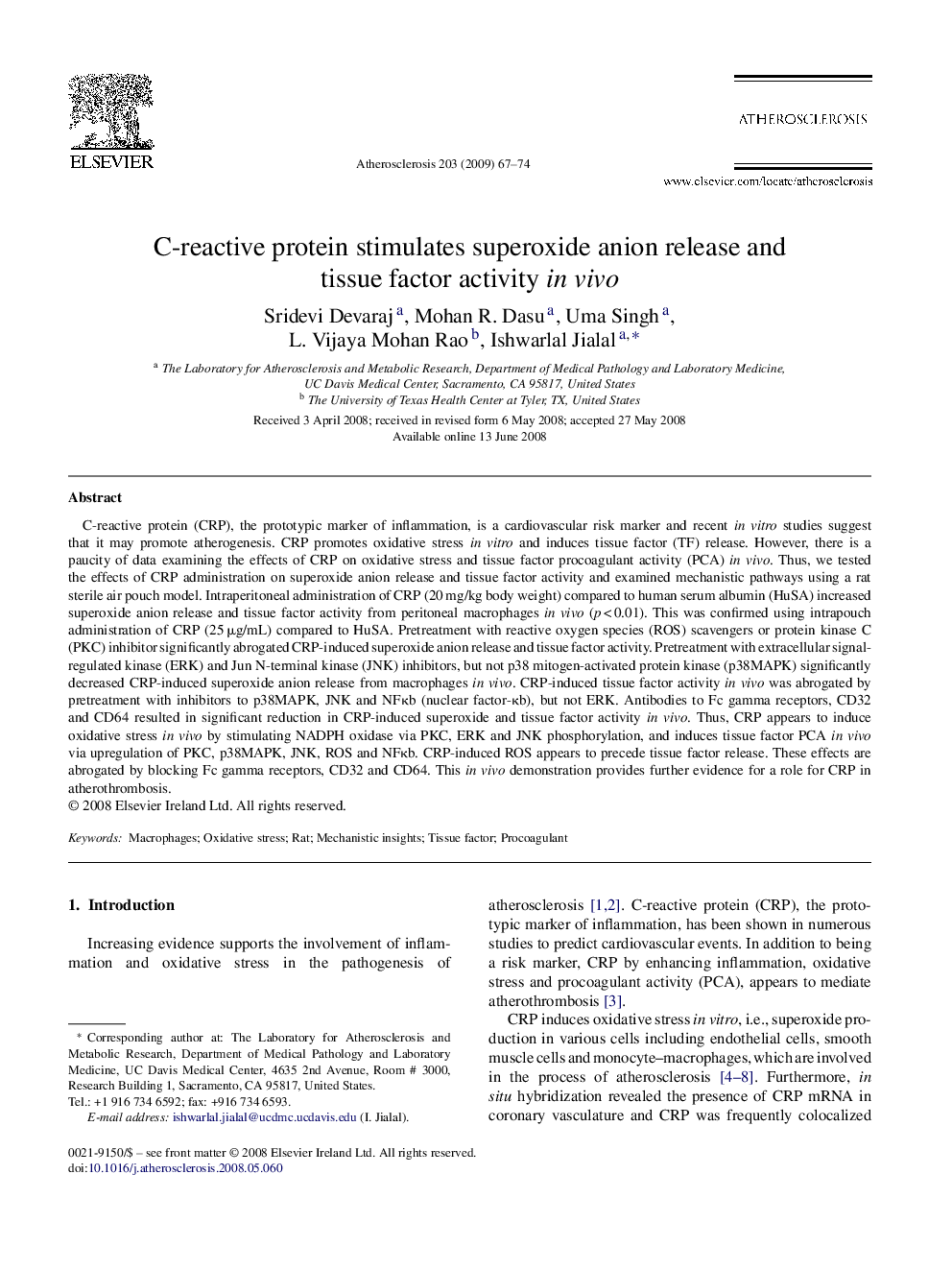| کد مقاله | کد نشریه | سال انتشار | مقاله انگلیسی | نسخه تمام متن |
|---|---|---|---|---|
| 5951483 | 1172427 | 2009 | 8 صفحه PDF | دانلود رایگان |

C-reactive protein (CRP), the prototypic marker of inflammation, is a cardiovascular risk marker and recent in vitro studies suggest that it may promote atherogenesis. CRP promotes oxidative stress in vitro and induces tissue factor (TF) release. However, there is a paucity of data examining the effects of CRP on oxidative stress and tissue factor procoagulant activity (PCA) in vivo. Thus, we tested the effects of CRP administration on superoxide anion release and tissue factor activity and examined mechanistic pathways using a rat sterile air pouch model. Intraperitoneal administration of CRP (20 mg/kg body weight) compared to human serum albumin (HuSA) increased superoxide anion release and tissue factor activity from peritoneal macrophages in vivo (p < 0.01). This was confirmed using intrapouch administration of CRP (25 μg/mL) compared to HuSA. Pretreatment with reactive oxygen species (ROS) scavengers or protein kinase C (PKC) inhibitor significantly abrogated CRP-induced superoxide anion release and tissue factor activity. Pretreatment with extracellular signal-regulated kinase (ERK) and Jun N-terminal kinase (JNK) inhibitors, but not p38 mitogen-activated protein kinase (p38MAPK) significantly decreased CRP-induced superoxide anion release from macrophages in vivo. CRP-induced tissue factor activity in vivo was abrogated by pretreatment with inhibitors to p38MAPK, JNK and NFκb (nuclear factor-κb), but not ERK. Antibodies to Fc gamma receptors, CD32 and CD64 resulted in significant reduction in CRP-induced superoxide and tissue factor activity in vivo. Thus, CRP appears to induce oxidative stress in vivo by stimulating NADPH oxidase via PKC, ERK and JNK phosphorylation, and induces tissue factor PCA in vivo via upregulation of PKC, p38MAPK, JNK, ROS and NFκb. CRP-induced ROS appears to precede tissue factor release. These effects are abrogated by blocking Fc gamma receptors, CD32 and CD64. This in vivo demonstration provides further evidence for a role for CRP in atherothrombosis.
Journal: Atherosclerosis - Volume 203, Issue 1, March 2009, Pages 67-74